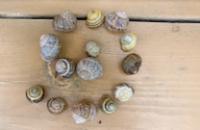
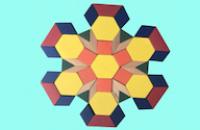
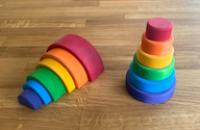
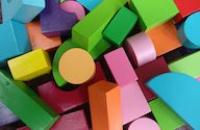
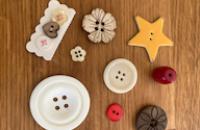
Children often enjoy putting objects in lines wiggling all over the place.
Adults could build on this by providing an environment that will give good opportunities for language work and discoveries.
The Activity
Gather together a selection of flat shapes of different colours and sizes, with sufficient room to create paths in and around the surroundings. This could be indoors or outdoors using man-made or natural shapes. The children are asked to 'make paths!'.
Encouraging mathematical thinking and reasoning:
Describing
Tell me about your paths.
Let's look at what everyone has made.
I wonder where this path is going.
I wonder who/what could be going along your path. How do you know what to put next?
Who used more shapes, you or ... ?
Reasoning
Why did you put ... next to the ... ?
Is there a pattern to your path? What could you put after the ... ?
Can you make your paths go (under the ... , round the ... , by the ... )?
Opening Out
How many teddies/lorries can use your path?
Can you put more lorries on your path?
Recording
Would you like to show your path on paper?
The Mathematical Journey
Comparing and describing:
- using everyday language to describe geometric ideas
- using mathematical language to describe shape, moving from informal such as wiggly, to more specific such as straight or curved
Number:
- counting and knowing that the last number in the path tells the total
Adding and subtracting:
- increasing or decreasing the number of shapes in the path
Properties of shapes:
- selecting shapes to add to the path by analysing their properties
- using shapes to solve problems about the route of the path
Development and Variation
Children could:
- Collect all kinds of objects, both natural and man-made, and stack them up into towers.
- Fit different objects into big boxes or drawers.
- Choose things to build with outside.
Resources
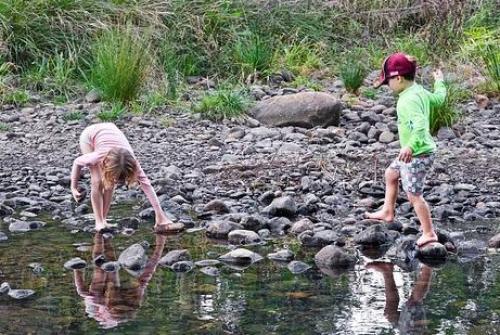
Small flat shapes that could be used as stepping stones or put together to make a continuous path.
Outside, look for larger flat shapes that are able to be carried safely, both man-made and natural.
Download a PDF of this resource.

